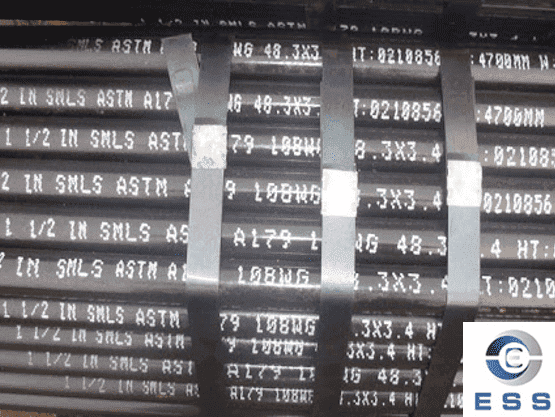
The heat
exchanger tube is one of the elements of the heat exchanger, which is
placed inside the cylinder and used for the exchange of heat between two media.
It has high thermal conductivity and good isothermal properties. It is a device
that can quickly transfer heat from one point to another, and there is almost
no heat loss, so it is called a superconductor of heat transfer, and its
coefficient of thermal conductivity is thousands of times that of copper. The
connection between heat exchanger tube and tube plate is a more important
structural part in the design of shell and tube heat exchanger. It is not only
the processing workload, and must make each connection in the operation of the
equipment to ensure that the medium without leakage and withstand the medium
pressure capacity. Heat exchanger tube and tube plate connection structure form
the following four main:
1. Welding Connection
The welding connection between the heat
exchange tube and the tube sheet is a common method, which strengthens the
connection between the heat exchange tube and the tube sheet through fusion
welding technology. This connection method has the characteristics of high
connection strength and good sealing, and is suitable for harsh working
conditions such as high pressure, high temperature, and corrosion. However, due
to defects and stress concentration in welding, it is necessary to strictly
control the welding quality and detect welding defects to ensure safety and
reliability.
2. Pressing Connection
The pressing connection method is to
connect the heat exchange tube port and the tube sheet aperture through the
sleeve accessories to form a fully sealed connection. The pressing connection
method can be divided into single pressing and double pressing. It has the
characteristics of easy installation and good sealing. It is suitable for some
low-pressure, general temperature, and working conditions that do not require
strong sealing.
3. Tube Expansion Connection
The tube expansion connection method is to
expand the heat exchange tube in the tube hole through the tube expander so
that the heat exchange tube and the tube hole are sealed and fixed. This
connection method has the characteristics of good sealing and easy
installation. It is suitable for some low-pressure, low-temperature, and
working conditions that do not require strong sealing.
4. Mechanical Seal Connection
The mechanical seal connection method is to
connect and fix the heat exchange tube to the tube sheet through a mechanical
seal device to form an efficient and sealed connection. The mechanical seal
connection method has the characteristics of good sealing and easy disassembly,
and is suitable for some working conditions with high requirements for sealing.
However, it should be noted that the sealing performance of the mechanical seal
connection method is not as good as that of the welding and crimping connection
methods.
In summary, the connection of heat
exchanger tube and tube plate includes welding, buckling, expanding and
mechanical sealing, etc., and it is necessary to choose the appropriate
connection according to different working conditions.













 Eastern Steel Manufacturing Co.,Ltd not only improve product production and sales services, but also provide additional value-added services. As long as you need, we can complete your specific needs together.
Eastern Steel Manufacturing Co.,Ltd not only improve product production and sales services, but also provide additional value-added services. As long as you need, we can complete your specific needs together.










